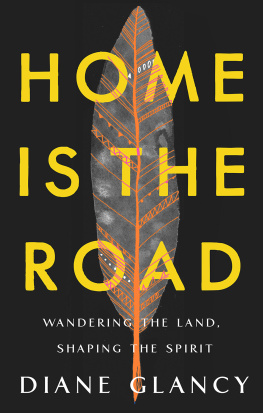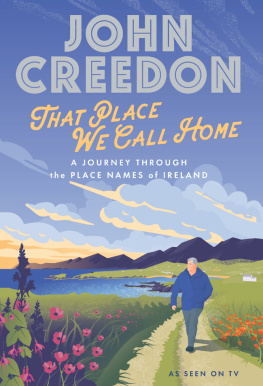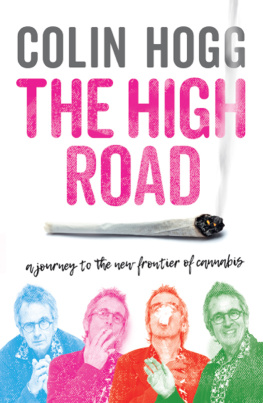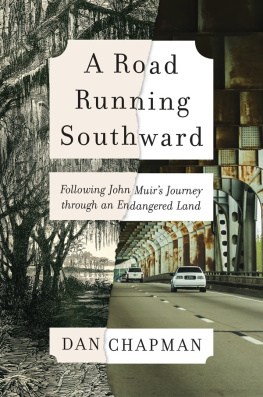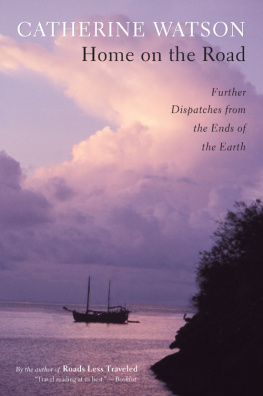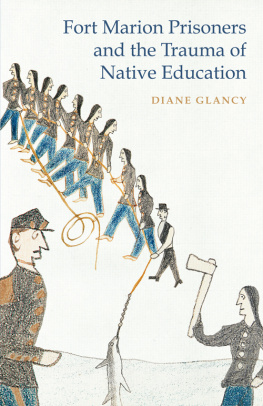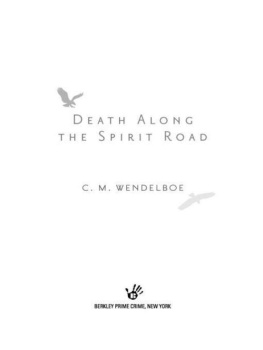Copyright 2022 Diane Glancy. Printed by Broadleaf Books, an imprint of 1517 Media. All rights reserved. Except for brief quotations in critical articles or reviews, no part of this book may be reproduced in any manner without prior written permission from the publisher. Email or write to Permissions, Broadleaf Books, PO Box 1209, Minneapolis, MN 55440-1209.
Scripture throughout is taken from the KJV, followed by New Revised Standard Version Bible, copyright 1989 National Council of the Churches of Christ in the United States of America with various adaptions related to theme/contemporary wording by the author. Used by permission.
The world is a book and those who do not travel read only one page.
O public road.
The thorn bush is the old obstacle of the road. It must catch fire if you want to go further.
PART I
THIS VILLAGE CALLED A RIVER

THIS VILLAGE CALLED A RIVER
A Wayfarer
My life began in travela wayfarer not on foot, but in a car.
First trip to the farm was written underneath one photograph taken where I was three months old. We went often. Im not sure why. I have outlived those who held the memories and there is no one left to ask.
A long time ago I was born in the plainness of the earth. Dust clouds had passed. Topsoil had blown away. The Depression was over. Another war would begin. I was born long ago in the middle of the country in a harsh time. God spoke in the heavy weather. There were labor union disputes and roughness.
We traveled back to my mothers parents farm sixty-nine miles south of Kansas City on Highway 69. A seriousness was there. My grandparents were remote. I was in the way. They were people to be feared. Now the old farmhouse in Kansas is gone. The barn and outbuildings. Only the bending weeds in the field still wave goodbye.
I was plain as the words I heard and spoke. I had been marked plain on the assembly line of those slantways where the spirits of infants are dropped into their bodies before birth.
Reading a Mary Ruefle poem, Sawdust,I was trying to take / a nail out of the wall / and it wouldnt stop coming / so I screamed / how much more of you can there be? Jesus then enters the poem as he plays with nails. Christianity came into my life that wayfrom the beginning it was a story that didnt stop, a story with nails.
In Bible school we learned there were a thousand hills where cattle lived that God owned. My father worked in the stockyards. I thought of God as the yard master. Jesus was his son the way my brother was the son of my father.
Whenever I saw the cattle chutes in the stockyards where my father worked, I thought of church and steeple where we were told we were separated from God. Jesus was the long and dusty farm road back to God. Everyone at Bible school accepted Christ as their Savior. We were scoured. Wiped of anything interesting. Thumbprints. Footprints. Pawprints.
In those days, we always were moving. My father was transferred from plant to plant.
I am starting late on the roads into my own life. Haunted by a herd of nightmares.
My salvation has been this: travel.
Travel and the Lord Jesus Christ punctured on the cross.
I am strengthened by the history of my driving.
I would leave the past behind, but it catches in my trailer hitch.
The former rain has fallen. The latter rain is still dripping from the eaves.
Gathering Water
On the wall above my writing table is an Edward Curtis print of an Apache woman filling a round clay vessel at the riverbank. Behind her, two ponies, a brown one and a white. They are wearing blankets over their backs, and basket panniers, in which the water vessel would ride back to the encampment.
On the table is the actual clay artifactan early form of the canteen, flattened on one side to ride against the hip. It looks like a small head. There are two handles on the sides like ears, and a spout that looks like a mouth saying, oh.
One evening, the vessel began to speak. About how early water carriers could have come from the full moon in the sky. It asked, Did not the moon come from the ocean?Did not a comet once hit the earth and send a piece of it into the airgorging out a place for the ocean to reside?
The Origin of Horse
A long time ago people began to arrive on earth. They wandered from a great distance.
When the people first came to earth, they lived near a river. They built a lodge because the nights were cold. They built a fire.
The Maker made buffalo for the people to eat. But the buffalo would not stay in one place. The people argued with them, but the buffalo would not listen. They called the buffalo a name that is hard to translate, but meant something like, balloon on its back.
When the people traveled away from the river to hunt buffalo, they cried for water.
But how to carry the water from the river.
Many people died of thirst until a woman had a dream of how to form mud into a balla round, hollow ball with an opening like a mouth. She dipped the ball into the river and carried away some water.
At first the water ball was hard to carry and slipped from the womans hands. She made handles on its sides so she could carry it. What is the name of that?the people asked. The woman saidA-ball-full-of-water-so-we-can-follow-the-buffalo. The women helped her make more balls to carry water.
But how to carry the water balls when they were full of water. It took many people, and the buffalo were far ahead. The people tried to drag the water balls on the ground, but the water spilled. They tried to roll the water balls, but the handles caught in the ground and the water balls broke.
One night, the woman who made the water jug had another dream. In the dream, she saw an animal who said its name was horse. She told the others what it looked like. Four legs and a head something like the buffalo, but smaller. They took clay along the riverbank for a brown horse, and the clay they found among some rocks that was almost white. In a sacred ceremony they breathed into clay nostrils and the horses snorted. They always are snorting to get rid of the breath so they can return to the river clay from which they came.
The women wove blankets from sheeps wool dyed with rabbit bush and the traders vermillion for the backs of the horses, and baskets for panniers to hold the water balls for the people as they traveled.
They painted the horses in a sacred manner. They named them, carriers-of-the-burdens-given-us-in-a-dream. They called them, carriers-of-water-in-vessels-from-this-village-called-a-river.
The Spigot of the Quarter Moon
What shall I equal to thee, that I may comfort thee.
Lamentations 2:13
I cant comfort you directly [the past is gone] but I can comfort something in the neighborhood of you and that should help comfort you

